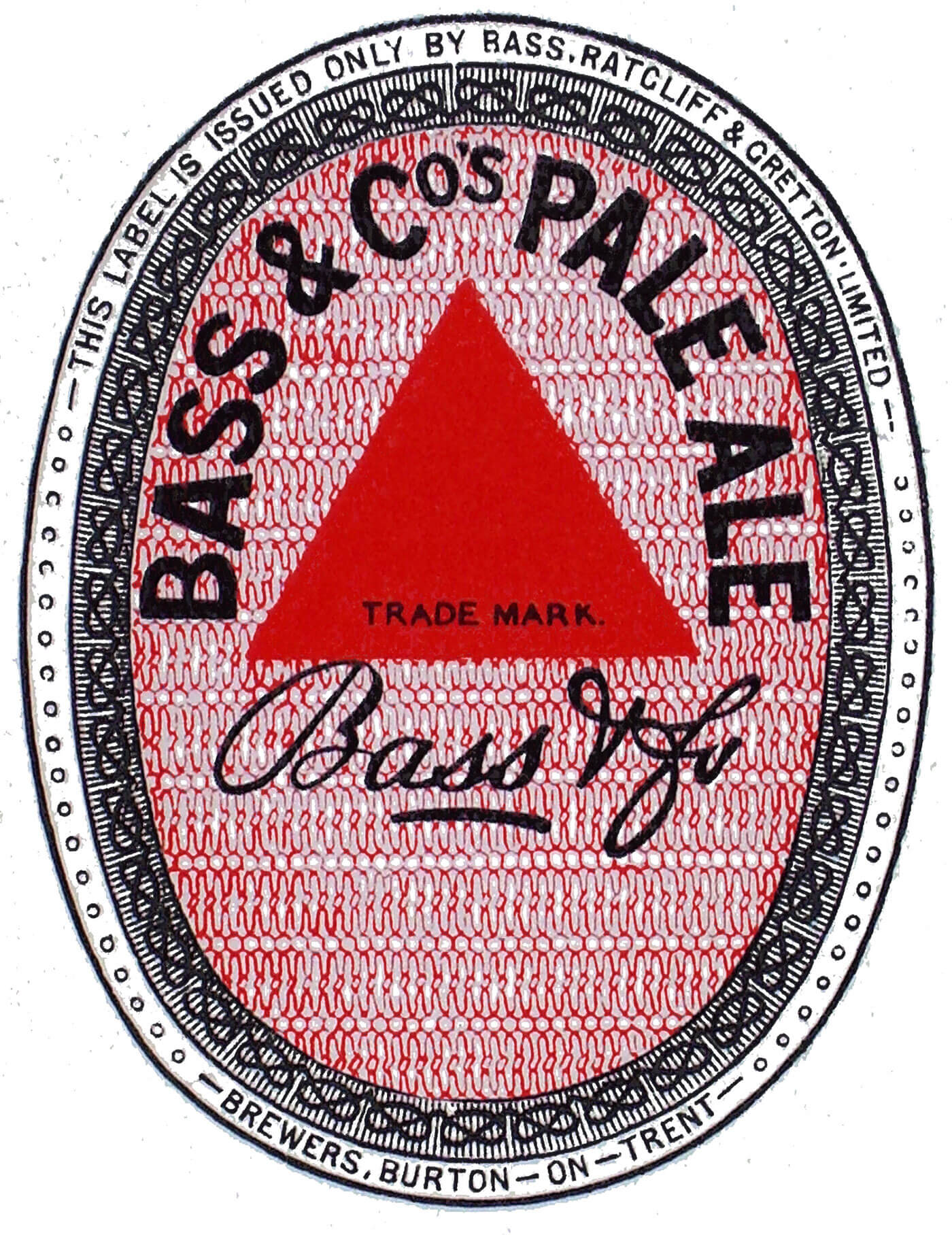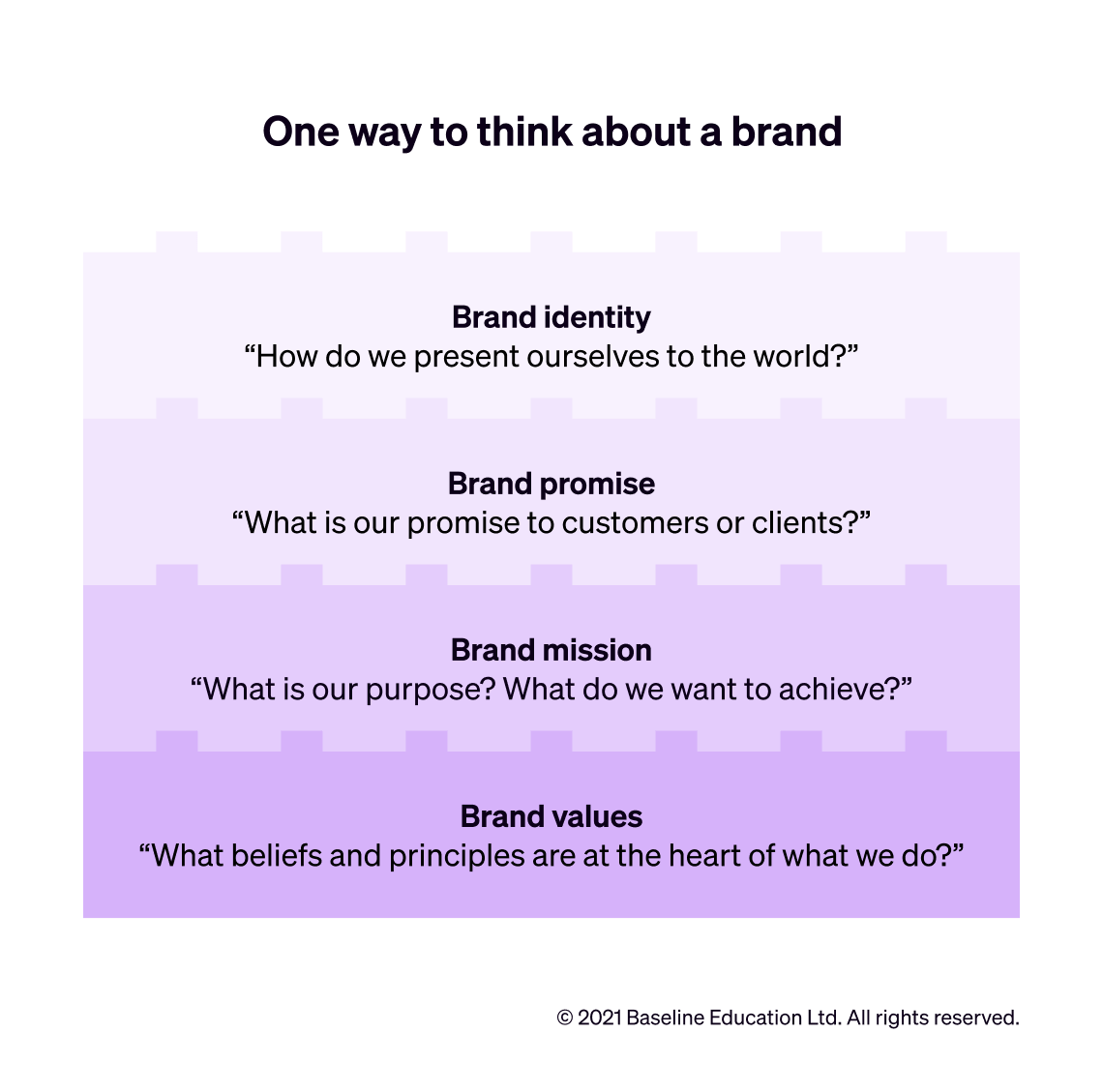Course · Part 5 · Assignment 2
Read
Brand Identity Design Basics
KeyThree
The key points from this assignment.
- A brand is what someone thinks and feels when they call to mind a product, business, or organisation
- Brand design is about much more than just a logo — it’s also about developing a distinctive brand voice, and telling a story that connects with people
- The best brand graphics connect seamlessly to the bigger brand promise

Image credit: Mary Pokatava
Introduction
What comes to mind when you think of the words “brand” and “branding”? It’s common to go straight to logos. But — even as graphic designers — designing a brand means much more than “just” creating visuals.
In this assignment, we’ll cover some definitions of brand, a little bit of branding history, and what different elements make up a brand identity.
The history of branding
The word “branding” derives from the practice of branding livestock with a hot iron, which goes back over 4,000 years.
The purpose of branding cattle and other animals was to make an indelible mark of ownership, and therefore discourage others from stealing those animals. Similar practices have long been used on pottery and metalwork as stamps of authenticity.
However, with the industrial revolution, and the subsequent increase in mass-market products, and in competition between companies offering similar products, a brand became about much more than simply stating ownership or authenticity.
The English brewery Bass & Co. is credited with registering the first formal brand trademark in the world, back in 1876. It’s pictured below.

Through the late nineteenth and early twentieth century, branding was of growing importance to a company’s competitiveness and overall commercial success.
It became common for a company or product name to be accompanied by a phrase or short sentence that summarised how that brand was different or distinctive, or, in short, why the customer should choose that product over the competition.
The definition of a “brand”
It’s famously difficult to define “brand”, and it’s partly because we use that one word — brand — to mean different things at different times.
Sometimes we’ll use “brand” simply to refer to the name or logo of a company or organisation. At other times, we’ll use it to mean something much more general, including the wider look and feel of how a company presents itself, or the values or philosophy of an organisation.
At one end of the scale, the American Marketing Association characterises a brand simply as a brand name and logo: “A brand is a name, term, design, symbol or any other feature that identifies one seller’s goods or service as distinct from those of other sellers.”
At the other end of the scale are all-encompassing, thought-provoking definitions like these:
- “A brand is a reason to choose.” —Cheryl Burgess
- “Brand is the sum total of how someone perceives a particular organization. Branding is about shaping that perception.” —Ashley Friedlein
- “A brand is the intangible sum of a product’s attributes: its name, packaging, and price, its history, its reputation, and the way it’s advertised.” —David Ogilvy
- “Your brand is what other people say about you when you're not in the room.” —Jeff Bezos
- “When you look at a strong brand, you see a promise.” —Jim Mullen
We’re not going to add another definition to the hundreds that have already been attempted. However, we think that it’s helpful to think of a brand like this:

In other words:
- a brand’s values lead it to a brand mission
- a brand’s mission and values lead it to a brand promise
- a brand’s identity (where graphic designers tend to get involved) should effectively communicate the brand’s promise, mission, and values.
Let’s take the ice cream maker Ben & Jerry’s as an example.
- Brand values: “We seek in all we do, at every level of our business, to advance human rights and dignity, support social and economic justice for historically marginalized communities, and protect and restore the Earth’s natural systems.”
- Brand mission: “We use ice cream to change the world.”
- Brand promise: “To make fantastic ice cream — for its own sake. To manage our company for sustainable financial growth. To use our company in innovative ways to make the world a better place.”
- Brand identity: Ben & Jerry’s brand identity guidelines
Source: Ben & Jerry’s
The difference between a brand and a brand identity
As explored above, it’s helpful to think of the term “brand” as referring to the whole package — values, mission, promise, and brand identity.
Depending on the size of the company and its stage of growth, a designer may or may not be involved in helping a company’s founders or managers understand and articulate their values, mission, and promise.
However, they will definitely be a big part of developing the brand identity. Designing a brand’s identity should be a highly collaborative exercise, including extensive initial discussions with the company’s leadership, and regular check-ins for comments and critique.
Here are the most important elements of a strong brand identity.
Elements of a brand identity
Non-visual elements, including:
- Brand name, for example Ford, Coca-Cola, Bosch. A brand name is analogous to a person’s name: we use it to remember them, to distinguish them from others, to talk about them with other people, and to call to mind things about them.
- Slogans, taglines, or catchphrases. For example, Nike has “Just Do It”, Apple used to have “Think Different”, and L’Oréal has “Because You’re Worth It”. Taglines tend to be less literal, and more emotional and aspirational.
Brand personality. Like people, brands have personalities — whether they intend to or not. The best brands define how they want to come across, as then align their overall brand presentation with that definition.
A brand personality typically reflects a brand’s values, and can be defined in a few keywords that relate to actions and behaviours – for example, “empathetic, helpful, honest”. The brand personality should also be evidence as much in a brand’s graphics as in its behaviours.
Brand voice. Although “brand voice” and “brand personality” are sometimes used interchangeably, it can be helpful to separately define how a brand speaks and writes.
This can inform how support staff speak to customers on the phone, as well as how copy is written for the company’s website. Keywords for a brand voice can also be distinct from the brand personality — for example, “informal, direct, positive”.
Visual elements, including:
- Logo. The key purpose of a logo is to be memorable. (We’ll come back to this in a few assignments’ time.)
- Colours. Sometimes brands trademark a specific colour, like the red used by Coca-Cola or the blue used by Tiffany & Co. Trademarking a colour restricts others in the same industry from using that colour to promote their own brand.
- Fonts and typographic styles. These days, companies that can afford to do so will often commission custom font designs to help differentiate their brand identity from competitors.
- Other trademarks and “sub-brands”. For example, Diet Coke is a trademark and sub-brand of Coca-Cola. A sub-brand will often follow its own set of brand identity guidelines, including its own logo, slogan (“Just for the taste of it”) and associated colours (silver).
In conclusion...
In this assignment, we briefly covered the definition of “brand”, and explored the different elements that make up a brand identity.
In the next assignment, let’s talk about how good design decision-making can lead to a great brand identity!